

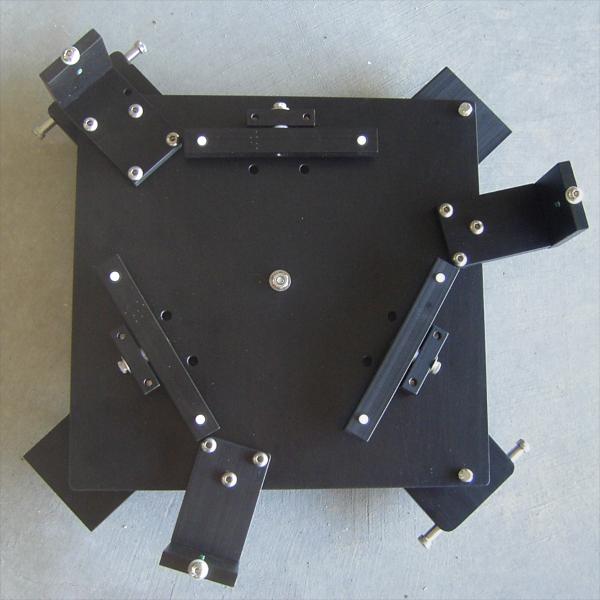
Aluminum mirror cell, 6-point design based on PLOP, self-designed and constructed. Levers supported by impregnated-oil bronze bearings and 1/4" diameter shoulder screws. Mirror back contacted by Nylon spheres, centered with Nylon-tipped screws.
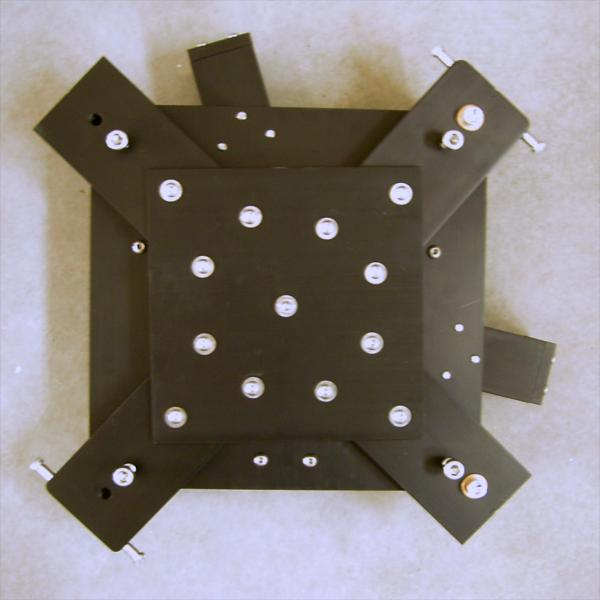
Rear of mirror cell. 3/8"-24 push-pull locking screws, orthogonal action.
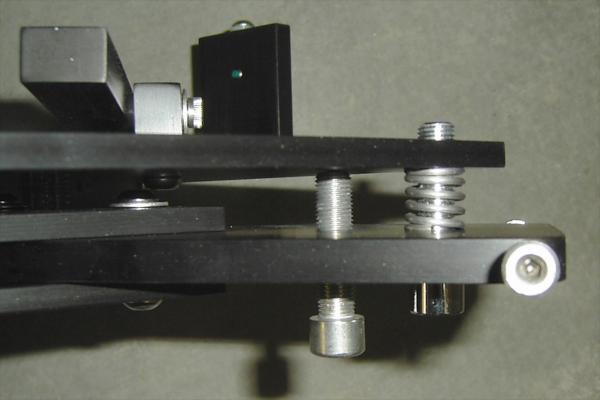
Push-pull adjusting screws, rounded-tip contacts, strong springs. Center of cell pivots about 1/4" shaft, so translation is limited.
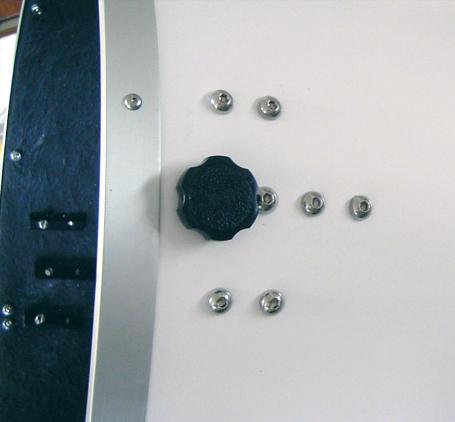
Knobs allow easy tightening and mirror cell removal.
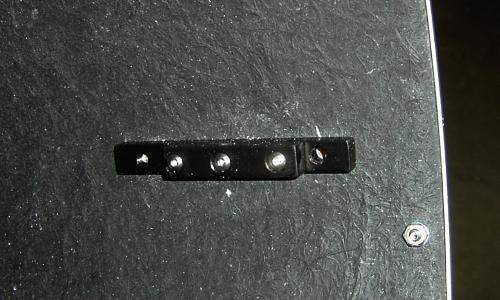
Two sides have a stop to locate the mirror cell.
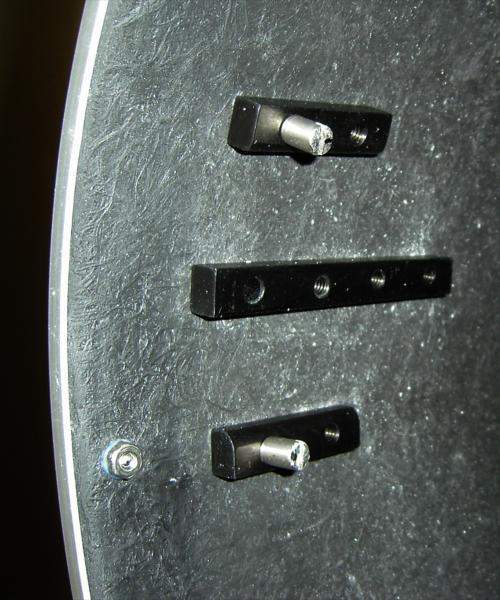
Top and bottom of tube use stops to center the mirror cell.
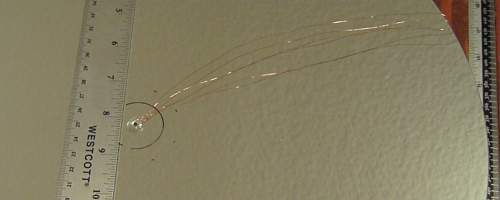
The center of the primary mirror has a calibrated LM20 sensor connected with #34 gauge wires, slightly curved to reduce strong diffraction. If the data from the other sensors show that this one is redundant, the wires can be clipped to eliminate all the scattering.
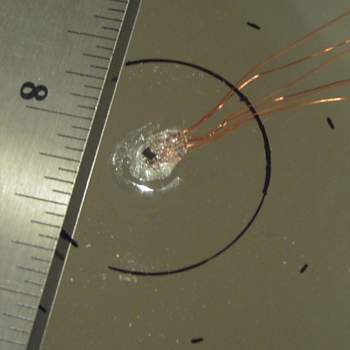
The sensor is placed in the center of the mirror. The black circle is one inch diameter, well within the secondary shadow. The dotted lines are on a two inch diameter.
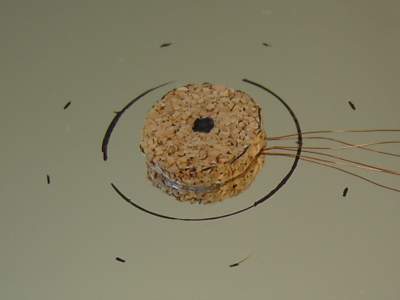
After the sensor was bonded, a small cork piece was placed on top to insulate it from air currents. The sensor should measure only the glass temperature.
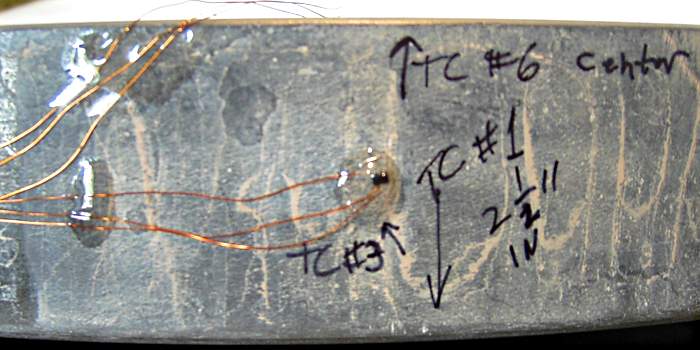
Another temperature sensor was mounted to the center of the mirror side. Strain relief is provided by bonding the fine wires to the mirror with spots of more epoxy.
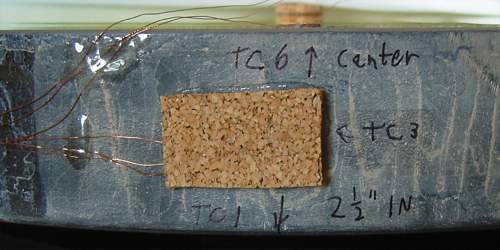
The side sensor is also covered in cork, bonded to the glass with silicone.
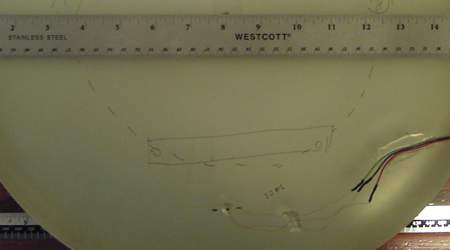
The sensor on the back of the mirror is placed at about the 70% radius. The sketch shows where the 6-point supports contact the mirror.
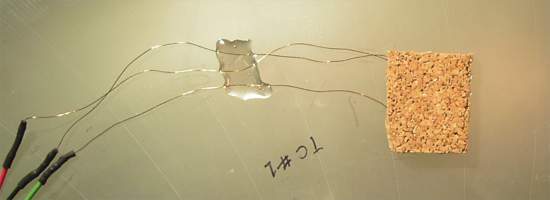
Cork covers the sensor on the back of the mirror.
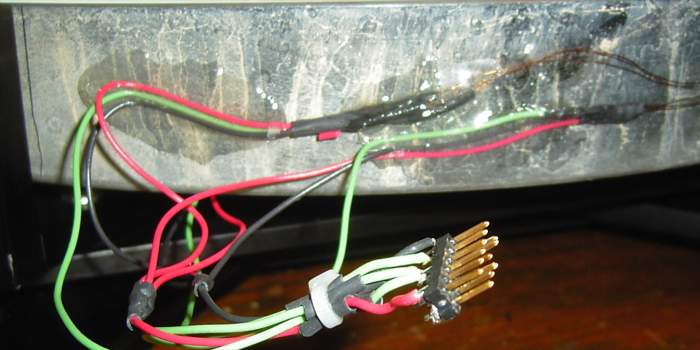
The sensors use a common supply and ground, so only five wires are needed to the connector that goes to the socket on the tube. Strain relief is supplied by using epoxy to bond the heavier wires to the side of the mirror.
Links to other Stellar Products pages: